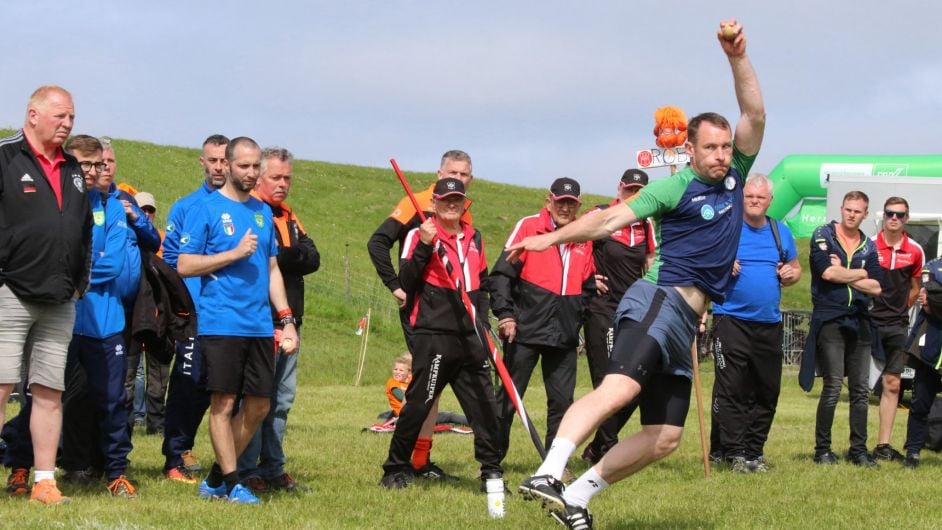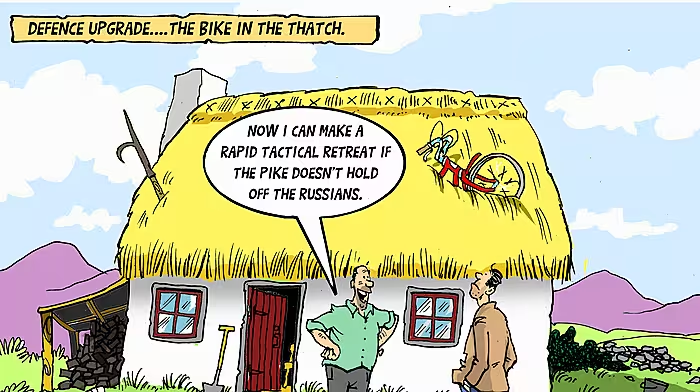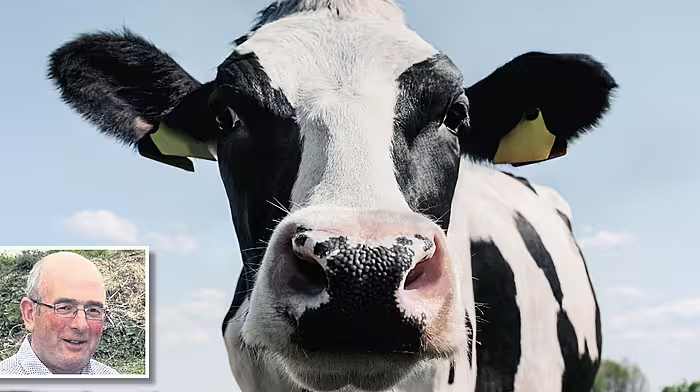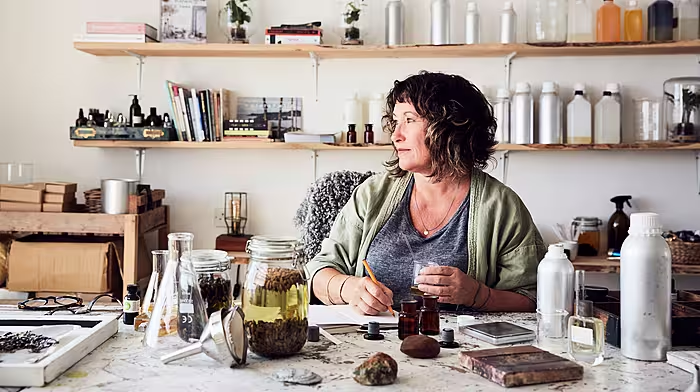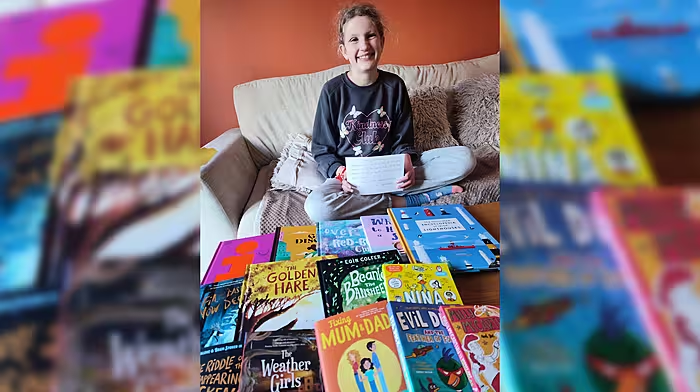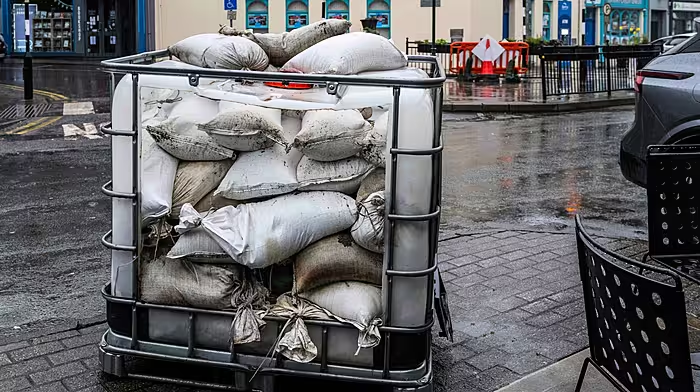The global success of a hit Netflix series has put the focus on road bowling, sparking an upsurge of interest in the sport, writes MARY McCARTHY

THE sport of bowling is peculiar to just a few counties, and countries – but now it has reached viewers across the globe – thanks to the hit Netflix series Bodkin.
Produced by Barack and Michelle Obama, the show was primarily filmed in Union Hall in West Cork and set in a fictional town which the series takes its name from.
It stars US comedian and actor Will Forte and Síobhan Cullen and is a comedy thriller about a crew of podcasters who set out to investigate the disappearance of three strangers in the town.
It became a huge hit on the streaming service, topping the charts in Ireland and several other countries and reaching the Netflix top 10 in more than 50 countries.
The podcasters in Bodkin stumble across a bowling match during the show, and this gave the ancient sport of road bowling an international platform, said James O’Donovan, winner of the European Championships 2024 in the Dutch Moors in Holland, who features in Bodkin.

‘Ból Chumann na hEireann approached me to take part in this Netflix production on road bowling,’ said James. ‘The filming took place in Wicklow, Dublin, and Union Hall. When it took to the air, the two-minute shot of myself throwing a bowl got people talking. It has resulted in an upsurge in road bowling, a sport that had declined a lot since the heyday of my youth.’
West Cork is the stronghold of this old tradition of Ireland. Cork and Armagh are where it has the strongest following. It is also played in pockets of the country like Mayo and Waterford.
After the covid lockdown, there was renewed interest in bowling for both the social aspect and the competition. ‘I love it,’ said James ‘It is so important to keep this heritage going. The rules of this game are that you have a starting and a
finishing line and whoever covers that distance in least the amounts of shots wins.
‘There are more men than women bowling, but more women are joining. Women of all ages are on the road throwing.
Even if women have never caught a bowl, all are welcome,’ said forty-something-year-old, Geraldine Curtin, winner of the 2023 Munster Senior Road Bowling Championship.
Kelly Mallon is the leading woman in women’s road bowling in Ireland. She is an exceptional athlete. ‘When I was growing up, the stalwarts in the sport were Gretta Cormican, Lyre, Agnes O’Gorman, The Pike, Susan Greene, Inniscarra, and Sharon O’Driscoll, Drimoleague,’ said Kelly.
‘There is great camaraderie in the game. Fantastic friendships are built from the social aspect,’ said Geraldine. ‘Moving up and down the road, you talk to someone different throughout every score, whether discussing a great shot or the weather. No matter what score, you know everyone, even if that means only knowing faces.’
‘Women-only championships are in full flight at the moment,’ said Geraldine. ‘Every second year they take part in a different area. In July, the All-Ireland Senior Women’s takes place in Castletownkenneigh.
In recent years, there have been mixed doubles competitions. In the European Championships of Irish road bowling, whoever gets the furthest distance in the 10 shots is the winner.
Women can affiliate and join for a small fee to participate in championships. Bowling takes place on public roads. There are no costs involved in attending as a player or spectator.
Competitors ‘win your way’ through the grades: junior, intermediate, and senior, to get to the top. ‘On any given day, there are different scores on different roads around the county. There is no practice like score practice and the experience gained from throwing,’ Geraldine added.
HISTORY OF BOWLING
THE origins of bowling in Ireland are a mystery, says Séamus Ó Tuama, a bowling correspondent.
One theory claims bowling came across Northern Europe, as a part of a group of sports. It is mostly played in Germany, Th e Netherlands, England and in Ireland. Another theory in history is that it followed the linen industry of Northern Ireland and Cork.
Around 10 years ago, archaeologists put forward another theory when a hurling hardball was found in bogs of Ireland adding it to the conversation. The tradition of the sport is that it was mostly played locally by men, especially on Sundays after mass. Th at was evident during the 1930s right up to the 1960s. It was free to play, and it was sociable. There was always someone to play against.
Back in the day, it was played with a stone ball. Then the local foundry made cannon balls to be used. Eventually the cannon balls became available from India, exactly spherical and standardised, weighing 28 ounces.
In the 1970s, as society changed, women started playing the game. ‘Bowling is part of Irish culture, like our language. People see it as a sacred tradition to be passed down to the next generation. There is a strong element of respect,’ added Seamus.
According to Pat McCarthy, bowling correspondent for The Southern Star, memories of bowling songs still exist.
After a score, celebrations in the pub included hearing the air of the likes of Flower of Cahermore, The Valley of Sweet CarrigRamhar,
and Bowling at Clancool.

